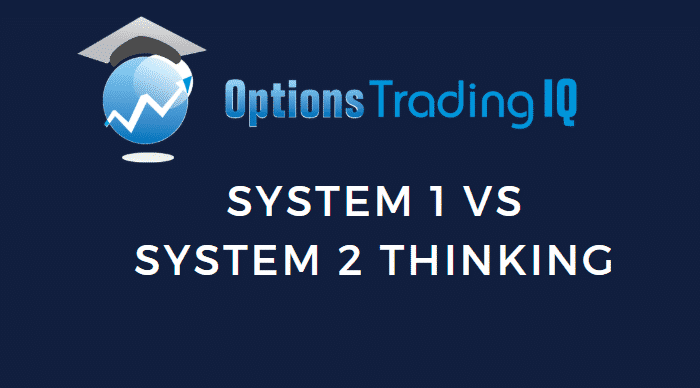

System 1 thinking is where simple and straightforward ideas travel quickly. It takes little time and not much intellectual work to calculate price-earning ratios or a dividend yield.
System 2 thinking is the reflective part of our cognition process. It operates in a controlled manner, slowly and with effort. Our slow-moving ideas that require reflection, judgement and special expertise are housed in System 2 thinking.
In 2011, the Nobel Laureate Daniel Kahneman wrote a New York Times best seller titled – Thinking Fast and Slow. Kahneman reminds us that cognitive effort is mental work, and, as with all work, many of us have the tendency to get lazy when the task gets harder. He is surprised by the ease with which intelligent people appear satisfied enough with their initial answer that they stop thinking.
Kahneman tells us activities that put demands on System 2 thinking require self-control, and continuous exertion of self-control can be unpleasant.
If we are continually forced to do something over and over that is challenging, there is a tendency to exert less self-control when the next challenge arrives. Eventually we simple run out of gas.
Sample Iron Condor Trading Plan
In contrast, those who avoid the sin of intellectual sloth could be called engaged. They are more alert, more intelligently active, less willing to be satisfied with superficially attractive answers, more skeptical about their intuitions.
A study at Yale university gave us a fascinating look at how people with fairly high IQs navigate between System 1 and System 2 thinking. A group of Ivy league students were asked the following 3 questions:
- A bat and ball cost $1.10. The bat costs one dollar more than the ball. How much does the ball cost?
- If it takes five machines five minutes to make five widgets, how long would it take 100 machines to make 100 widgets?
- In a lake, there is a patch of lily pads. Every day, the patch doubles in size. If it takes 48 days for the patch to cover the entire lake, how long does it take for the patch to cover half the lake?
Over half the students got the answers wrong, leading to two significant problems.
First, people are not accustomed to thinking hard about problems and often rush to the first plausible answer that comes to mind so they don’t have to engage the heavy burden of System 2 thinking.
Second, was the realization that System 2 process does a very poor job of monitoring System 1 for errors.
How do System 1 and System 2 thinking work in investing?
Say an investor is considering making a stock purchase.
Using system 1 thinking, the investor would tabulate a company’s PE, book value, dividend yield.
Seeing that the two ratios are trading near historical lows and the company has raised dividends each year for the past 10 years, the investor might quickly conclude that the stock is good value.
Sadly, too many rely exclusively on System 1 thinking to make a decision, never stopping to engage System 2 thinking.
What does it mean to be engaged? It means your system 2 thinking is strong, vibrant and less prone to fatigue.
Put in context, System 2 distinguishes from System 1 thinking only if it is adequately armed with the required understanding of a company’s competitive advantages, the strength of a company’s management team to rationally allocate the capital of the company, the important economic drivers that determine a company’s value, and the psychological lessons that prevent the investor from making foolish decisions.
Much of mainstream investment decision making is System 1 thinking. It operates mainly by intuition. Decisions are made automatically and quickly with little or no time for thoughtful reflection.
System 2 thinking is serious thought. It is deliberate and requires concentration. System 2 thinkers are naturally patient. For system 2 thinking to work effectively, you must allocate time for deliberation and mediation.
Trade Safe!
Disclaimer: The information above is for educational purposes only and should not be treated as investment advice. The strategy presented would not be suitable for investors who are not familiar with exchange traded options. Any readers interested in this strategy should do their own research and seek advice from a licensed financial adviser.










